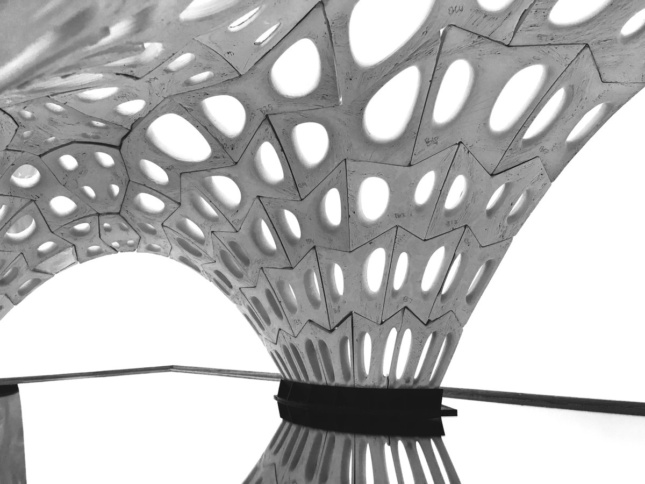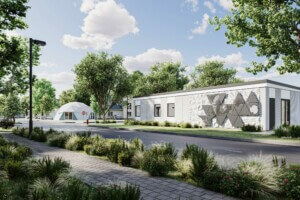Exhibit Columbus, the annual celebration of mid-century and contemporary design in Columbus, Indiana, will be showing off new possibilities of materials that unify support and envelope. This August, two of the festival’s six University Design Research Fellows will present this work as part of a brand new fellowship program.
Marshall Prado, a professor at the University of Tennessee, is creating a 30-foot-tall tower out of a carbon-and-glass fiber spun by robots. To manufacture Filament Tower, strands of the material were rotated on a steel frame and injected with resin, which is cured and then baked to increase its tensile and compressive strength. After cooling, the 27 computationally-designed components were removed from the steel frame and made to support themselves. The design was inspired both by historic architecture—akin to the churches of Eero Saarinen—and by biology. Filament Tower mimics the integrated, fibrous matrices of protein structures native to the connective tissues found in plants and animals, all while maintaining transparency.

Christopher Battaglia, a research fellow at Ball State University, turned his skills to a different material for Exhibit Columbus: concrete. In DE|stress, a 35-foot-long, 9.5-foot-tall, pavilion, Battaglia critiques the common approach to prefab concrete construction, which often sacrifices either strength and control over form. DE|Stress is made from 110 curved panels created in a green-sand casting method, where the concrete, made of silica sand and bentonite clay, is worked while still wet. The same CNC robot that produced the mold, which is easily recyclable, later prints the material, giving the process a high degree of efficiency.
“There’s no material waste in the form-making at all,” Battaglia claimed in a report from Autodesk. He also said that 3D printing gives a far greater control over shaping the vault-like structure, which is designed to encourage communal occupation and encounters.











